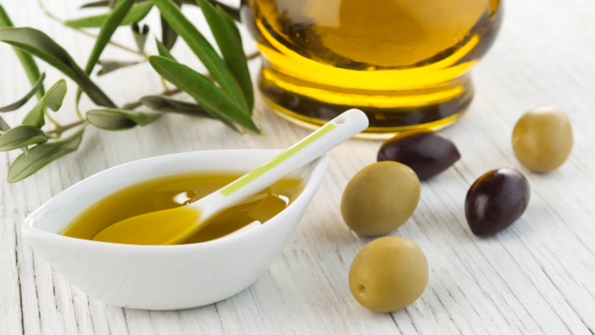If you’re on a mission to make olive oil part of your health plan, aim for about 4 tablespoons of 100 percent olive oil per day by drizzling over salads or fresh, sliced tomatoes or using as a simple dip for whole-grain bread.
But buyer beware: While it may be tempting to choose the cheapest, largest jug of extra-virgin olive oil at conventional grocery stores, it’s not the best idea. Not only will the flavor be subpar, it may not even be olive oil. Unfortunately, olive oil adulteration is common. Seeking profits, tricksters can blend extra-virgin olive oil with low-quality varieties, or even with other plant oils like sunflower oil, reducing olive oil’s superior health benefits. It’s worth it, however, to suss out quality olive oil, as top varieties impart peppery, fruity flavors. Here are some tips to make sure you’re getting the real thing.
- Look for origin.
 High quality products from olive oil-producing countries like Italy usually have what’s called a D.O.P. label indicating exactly where the product came from. D.O.P. loosely translates to Protected Designation of Origin, and it ensures products are produced in accordance with strict guidelines.
High quality products from olive oil-producing countries like Italy usually have what’s called a D.O.P. label indicating exactly where the product came from. D.O.P. loosely translates to Protected Designation of Origin, and it ensures products are produced in accordance with strict guidelines. - The vessel counts. Look for olive oil in a very dark glass bottle or tin container. Light can make olive oil turn rancid faster.
- Choose extra-virgin olive oil. Extra-virgin olive oil is the highest quality oil, as it is minimally processed. The oil has been extracted from first-harvest olives solely through mechanical means—not by chemical solvents.
- Sample it. High-quality olive oil is intensely aromatic, fruity, vegetal, peppery and pungent. If your olive oil is mild, not flavorful and nearly scent-free, chances are it is either low-quality or adulterated with other oils.
